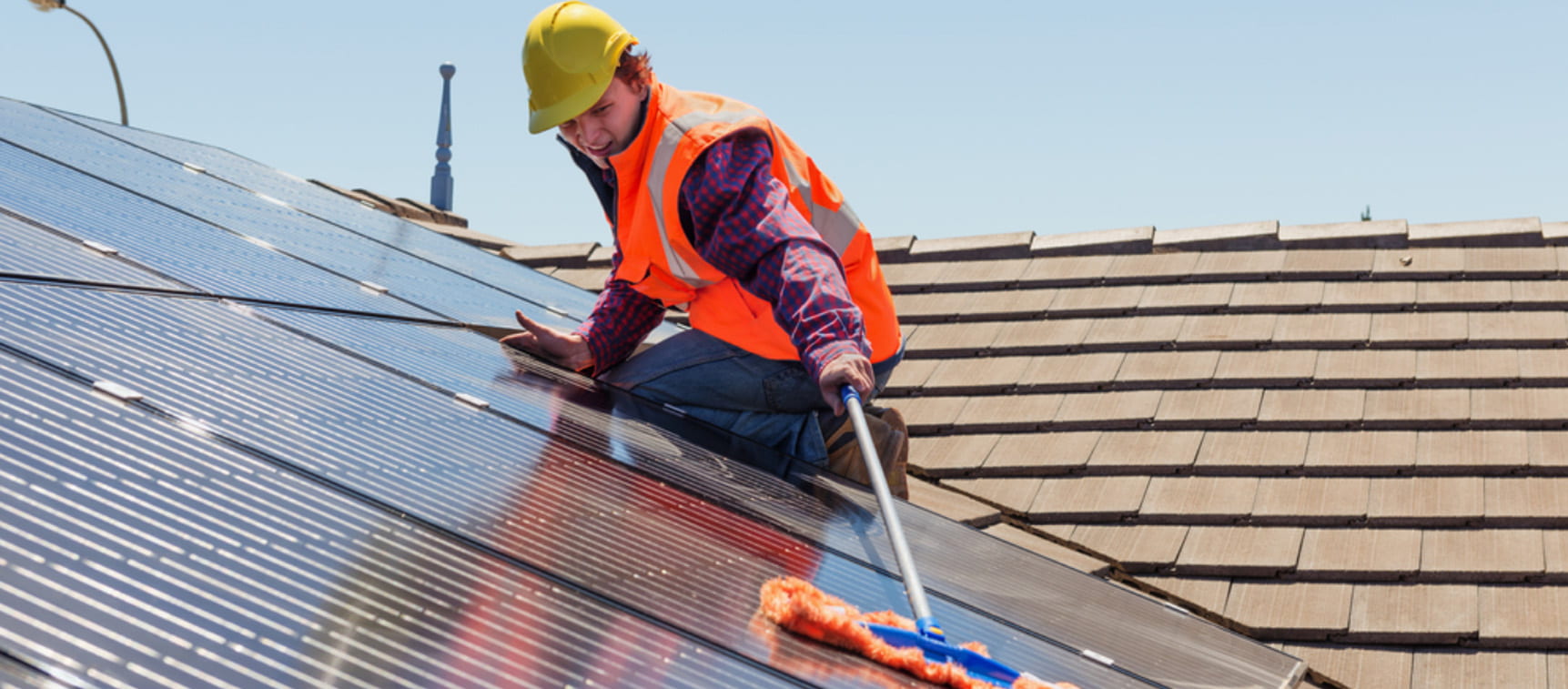8 Steps for Solar Panel Maintenance
Nov 30, 2023
If your home has solar panels installed, it’s essential to know how to properly maintain them.
Neglecting solar panel maintenance can lead to decreased efficiency and performance.
It could even void your warranty.
The good news is that solar panels require very little maintenance and mostly take care of themselves.
Side Note: Hiring professionals to do regular inspections is safer if you mount your panels on the roof.
Always use the proper safety gear if you intend to complete the work yourself.
Now let’s check out your checklist!
1. Create a Maintenance Checklist
The best way to ensure you get everything done is to write it all down.
Using an established maintenance checklist will keep you organized and on track.
Several of the steps included in this article make excellent additions.
Keep your records for your solar panel maintenance checklist.
Should something go awry later, you have proof that you completed regular checks. It also makes it easier for you to catch minor problems early before they spiral into a complete system shutdown.
If you hired a professional to install your panels, ask whether the company offers a maintenance plan.
Many companies do, and this can include yearly inspections and cleaning.
At the very least, the company might provide you with a free checklist.
2. Record Solar Power Generation
The wattage ratings on solar panels represent the best-case scenario on a clear summer day.
Solar panels generally produce less energy than this.
Therefore, the only way to know whether your solar panels have lapsed in performance is to measure their performance over time.
Start by measuring performance once a week or once a month at midday.
Continue to do so for a year.
Note: The lowest performance level and conditions versus the highest level and conditions.
Then record the average.
You’ll now know what typical performance is in the years that follow.
Ideally, you use a user-friendly interface that showcases and stores this information.
It’s then easy to record specific trends and plan accordingly.
3. Review the Manufacturer’s Solar Panel Maintenance Guidelines
The panel type and brand can create wide variations in how companies recommend you care for their products.
Instead of only following recommendations online, review the information for your specific panels.
The company should provide the following information:
• Whether you can walk on the panels
• How much weight walkable panels can withstand
• What kind of material or chemicals to use or not to use
• How often to clean the panels
Be mindful that, in colder climates, solar panel maintenance includes adding insulation over the solar trackers during the winter months.
Insulation prevents them from freezing in place and breaking off during wind gusts.
4. Check Electric Solar Wiring Every 6 Months
When solar panels malfunction, they usually fail open.
This means the panel no longer produces power or feeds electricity back into your home’s electrical system.
For this reason, solar panels are not considered a fire hazard during a blackout or other outage.
Look for fraying, wearing, or any other damage that could lead to a short circuit.
You should also check the solar panels and wiring if there is any evidence of a panel module failure.
If you notice any problems with wiring, it’s best to have an electrician check and do the repairs.
Turn off the solar power system until you find a solar panel service technician.
5. Inspect Your Solar Panels Monthly
This solar panel maintenance step involves checking the solar panel for debris or dirt build-up that might block sunlight from hitting the cells.
Additionally, look for any cracks, chips, or broken solar cells.
If you have a solar panel split into two pieces, check the seal around the seam.
You can use a garden hose with a soft spray nozzle when cleaning solar panels.
Do not use any harsh chemicals as these can damage the protective coating and the crystals.
If you have a solar panel that is not producing as much power as it used to, it might be time to call in a professional.
They will likely use a commercial-grade pressure washer.
6. Tighten Bolts and Screws
Solar installations call for a lot of screws and bolts.
Over time, temperature changes and resulting contraction and expansion can cause these to come loose.
As part of your solar panel maintenance routine, check all the screws and bolts to ensure they are tight.
Use a torque wrench to tighten them if needed.
Loose screws and bolts present more than just an aesthetic problem.
They could lead to decreased performance.
In a worst-case scenario, they can also make it easier for heavy winds to lift the panels off your roof.
If your solar panels are ground-mounted, check them for stability.
If they give even a little when pushed or rock back and forth, take action to increase stability.
You could add more stakes or water barrels to weigh down the base.
7. Inspect Your Roof as Part of Solar Panel Maintenance
Your solar panels protect your roof by taking the direct hit from the elements.
They last for up to 30 years, which could outlast your roof.
This is especially the case if you didn’t time the installation with your roof replacement.
If the roof fails, both the roof and your panels could cave into your home.
This could result in severe injuries and expensive property damage.
8.Consequently, regular roof inspections play an integral role in your maintenance plan.
While inspecting your roof, look for water leaking into the junction box or solar panels.
If you find any leaks, patch them immediately.
This is another instance when you should consider turning off the system.
Water and electricity are a bad mix.